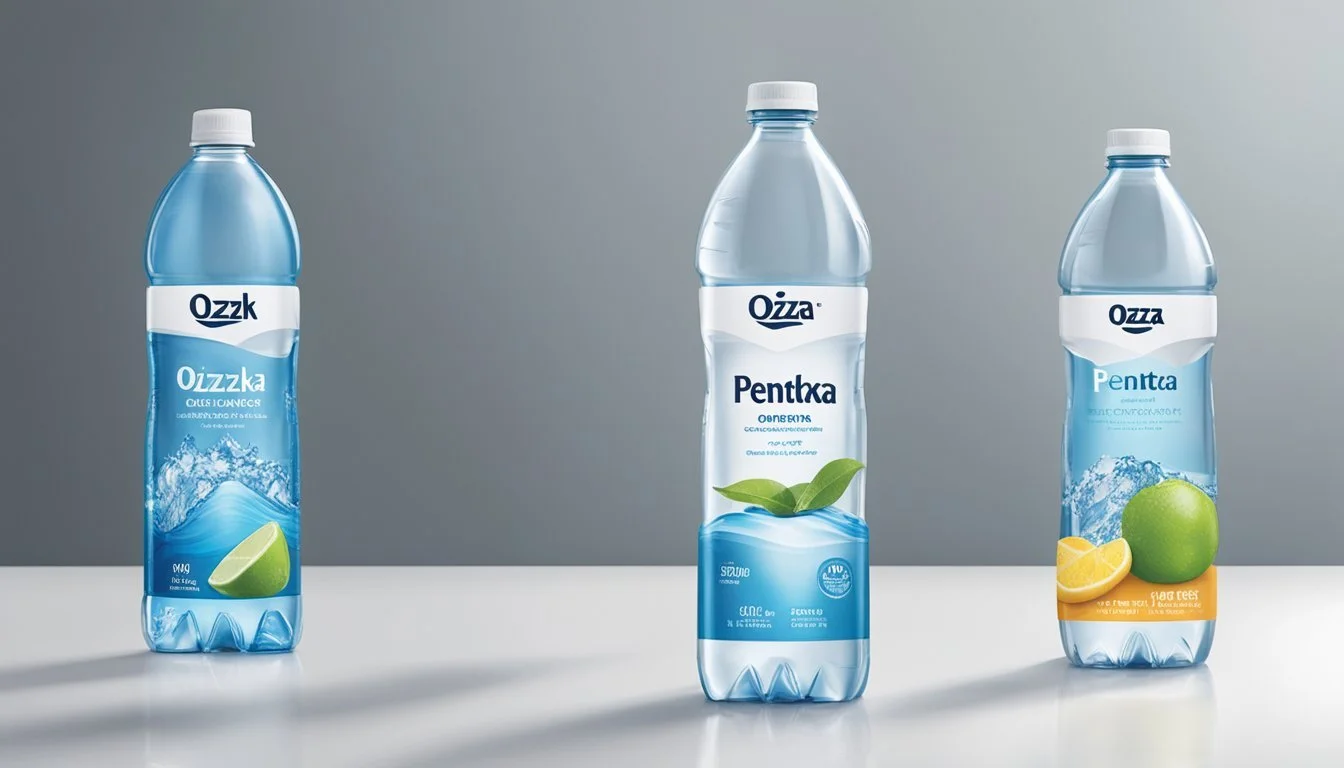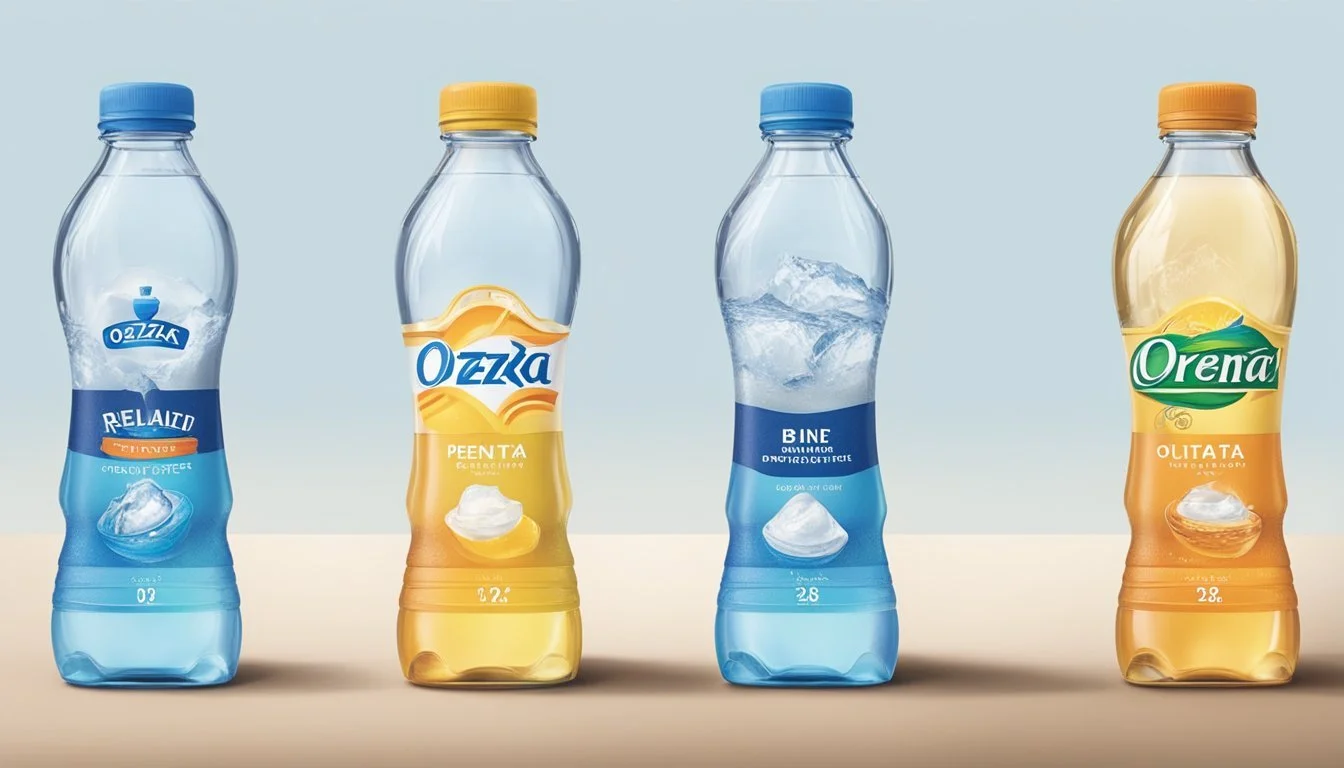Ozarka vs. Penta Comparison
Unveiling the Superior Bottled Water Brand
Choosing the right bottled water can significantly impact one's daily hydration routine. Ozarka and Penta represent two brands with distinct characteristics in the bottled water market. Ozarka, known for its regional sourcing from Texas springs, offers a taste that reflects its natural origins. Penta, on the other hand, boasts a highly purified water, undergoing a patented 13-step purification process, which has won it a position among those who prioritize purity in their water.
Consumers often weigh various factors when selecting bottled water, such as taste, purity, price, and the source of the water. Ozarka's appeal lies in its regional identity and natural mineral content, which may contribute to its taste profile being preferred by those who favor a more 'natural' water. Penta's selling point is the scientific rigor behind its purification, aiming to deliver a clean and consistent product that appeals to consumers who are concerned about contaminants.
In assessing which bottled water is superior, it is essential to consider individual preferences and the intended use. Some may opt for Ozarka when seeking a connection to a specific locale or enjoy the mineral taste that comes from spring sources. In contrast, Penta might be the choice for those who view the absence of impurities as paramount and are willing to invest in a product that promises an ultra-pure experience. Each brand upholds different promises to their consumers, highlighting the subjective nature of "better" in the context of bottled water.
Comparative Overview of Ozarka and Penta
In a market flooded with options, Ozarka and Penta stand out for their distinct sources and bottling processes. This section analyzes both brands from their origins to their manufacturing practices to understand which bottled water might be better suited for consumers.
Brand History and Evolution
Ozarka, dating back to 1905, is rooted in the American Southwest. The brand evolved through the century and expanded its distribution areas. Penta, established much later in 1997, is relatively young but quickly positioned itself as a premium water brand.
Source and Water Type
Ozarka offers natural spring water sourced from multiple springs in Texas. It's rich in naturally occurring minerals, which gives it a unique taste. Penta's water is ultra-purified groundwater; it undergoes a patented 13-step purification process that removes more impurities than standard methods.
Production and Bottling Processes
Ozarka focuses on eco-friendly practices, using recyclable materials and local bottling sites to reduce its carbon footprint. Penta, on the other hand, emphasizes the purity of its product, bottling water in BPA-free plastic to ensure no contaminants interfere with the taste and quality of the water.
Quality and Purity Analysis
In comparing Ozarka and Penta bottled water, one must consider various factors that impact quality and purity such as contaminant levels, mineral content, filtration technology, and adherence to FDA regulations.
Contaminant Levels
Contaminant levels are a crucial aspect of assessing the purity of bottled water. Ozarka produces a water quality report that outlines the levels of contaminants detected in its water, which typically falls within EPA standards. Penta, on the other hand, emphasizes its ultra-pure water, claiming minimal contaminant levels due to its patented filtration process.
Mineral Content
The mineral content in water can affect both taste and health benefits. Ozarka, sourced from natural springs, naturally contains a blend of essential minerals that the body needs. Penta water, though highly purified, may not have the same level of naturally occurring minerals due to its intensive filtration process.
Hydro-7 Filtration Technology
Penta utilizes a proprietary filtration method known as Hydro-7, which is designed to reduce impurities and contaminants, including removing more than 99.9% of organic and inorganic substances. This process claims to provide a level of purity that stands out in the bottled water market.
FDA Regulations Compliance
Both Ozarka and Penta must comply with FDA regulations, ensuring that the water they provide is safe to drink. These regulations include standards for water quality parameters, including allowable levels of contaminants. Compliance with these regulations is reflected in each brand's water quality report and is vital for consumer trust.
By examining these factors, consumers can make an informed decision about which bottled water brand meets their preferences for quality and purity.
Taste Profile Comparison
When comparing the taste profiles of Ozarka and Penta bottled water, consumers will notice distinct differences influenced by acidity and alkalinity levels, which can affect the overall taste experience.
Taste Test Findings
In taste tests, individuals report that Ozarka, typically sourced from natural springs in Texas, possesses a fresh and clean taste that is commonly associated with spring waters. Its natural filtration process is said to imbue the water with minerals, often affecting its taste in a seemingly positive way.
Penta, on the other hand, is ultra-purified and has been noted for its notably pure and crisp flavor. Penta's extensive purification process, which includes steps like UV light treatment and reverse osmosis, may strip more of the minerals that can influence flavor, resulting in a distinctive, clean taste profile prefered by some consumers.
Acidity and Alkalinity
The acidity and alkalinity of bottled water are quantified by its pH level. The pH scale ranges from 0 to 14, with 7 being neutral. Beverages with a pH below 7 are considered acidic, while those above 7 are alkaline.
Ozarka: Typically has a pH that hovers around neutral. Despite being sourced from springs, where the pH can vary slightly, Ozarka ensures consistency, and the minerals contribute to its neutral to mildly alkaline taste.
Penta: Boasts a pH level that is often much closer to 7, leaning towards the alkaline side, but not excessively so. The purification process Penta undergoes is designed to ensure a consistent pH level, yielding a taste that is perceived as smooth and balanced.
Brand pH Level Taste Notes Ozarka Neutral Fresh, mineral Penta Neutral Pure, crisp
These pH levels contribute to each brand's taste. Where Ozarka may offer a slightly mineralized taste, Penta's focus on purity results in a clean flavor profile, free from strong mineral notes.
Health and Hydration
The comparison between Ozarka and Penta in terms of health and hydration revolves around their effectiveness in hydration and the health benefits offered by their mineral content.
Hydration Efficacy
Both Ozarka and Penta bottled waters serve the primary purpose of hydration, which is crucial for numerous bodily functions. Hydration efficacy is largely consistent across most brands of bottled water, including Ozarka and Penta. However, the differences may lie in their mineral content and pH levels, affecting their hydrating ability and overall taste. Penta water claims a high level of purity and is known for its ultra-purified drinking water, which could suggest fewer impurities that might interfere with absorption. Ozarka, sourced from natural springs in Texas, offers a natural balance of minerals conducive to good hydration.
Health Benefits of Mineral Water
Mineral water typically contains essential minerals like calcium, magnesium, and potassium. Ozarka being a natural mineral water, potentially provides these minerals, which are vital for health functions such as bone health, nerve transmission, and overall cardiovascular health.
Essential Minerals:
Calcium: Supports bones and teeth.
Magnesium: Aids metabolism and muscle function.
Potassium: Vital for cell function.
While Ozarka offers natural minerals, Penta focuses on its ultra-purifying process, stripping away both contaminants and, potentially, some naturally occurring minerals. For consumers seeking higher alkalinity and mineral content, Ozarka may have the edge. Conversely, for those preferring purity and potentially smoother taste, Penta might be preferable.
Although alkaline water has been a trend, claiming various health benefits, there is limited scientific evidence supporting that alkaline water is superior to other forms of purified water in promoting health and hydration. Therefore, when considering health and hydration between the two, one should weigh personal preference for mineral content and pH level against the absolute need for pure, hydrating water.
Environmental Impact and Sustainability
When comparing Ozarka and Penta bottled water, one must consider how bottle manufacturing and recycling, along with water source sustainability, affect the environment. Both brands have their distinct approaches to mitigate the environmental impact of their products.
Bottle Manufacturing and Recycling
Ozarka mainly uses plastic water bottles, which traditionally have a high environmental impact due to the energy required for production and challenges with recycling. However, they have made efforts to produce BPA-free bottles, and encourage recycling to lessen their environmental footprint.
Penta Water, on the other hand, emphasizes its use of high-grade plastic and a patented 13-step purification process. An analysis of their environmental impact considers both the resources used for bottle manufacturing and the energy consumed during their extensive purification procedure.
Aspect Ozarka Penta Bottle Material BPA-free plastic High-grade plastic Recycling Initiatives Encourages recycling of bottles Not clearly stated Environmental Claims Uses less plastic in bottles Purification process consumes energy
Water Source Sustainability
Ozarka sources its water from natural springs located in Texas. They state that they are committed to sustainable sourcing and adhere to the regulations set forth by the Environmental Protection Agency (EPA). The company claims to monitor and manage water sources to help maintain the ecological balance.
Penta Water, on the other hand, does not clearly elaborate on the sustainability of their water sources. As a purified water brand, their focus is more on the purity of the water rather than the source sustainability. However, the environmental impact of sourcing water cannot be overlooked, as it is essential to ensure the longevity of water supplies for future generations and the health of ecosystems.
Aspect Ozarka Penta Water Source Natural springs in Texas Purified water Sustainability Commitment Monitors and manages water sources Focus on water purity Regulations Compliance EPA guidelines followed Unclear on specific initiatives
Packaging and Accessibility
When considering bottled water options, consumers often evaluate the type of packaging and how easy it is to obtain the product. Ozarka and Penta each offer distinct approaches in these areas.
Bottle Design and Materials
Ozarka utilizes plastic bottles that are intended to be recycled. Though not explicitly stated to be BPA-free, these bottles are lightweight and emphasize convenience. Penta, on the other hand, distinguishes itself with high-density polyethylene bottles, which are indeed BPA-free. This material is known not just for its safety in terms of chemical absence but also for its strength and recyclability, catering to those who are environmentally conscious and prioritize purity in bottled water packaging.
Ozarka: Recyclable plastic bottles
Penta: High-density polyethylene, BPA-free
Availability and Distribution
The distribution of bottled waters varies widely by brand. Ozarka is primarily distributed in the Southern United States, aiming at regional accessibility. Its ubiquity in stores across this region makes it a familiar and readily available choice for hydration. Penta, with its premium positioning, can be harder to find but is available both online and in select health-focused retailers nationwide. Its distribution strategy aligns with a targeted consumer base that values the specific properties of the water.
Ozarka:
Availability: Regional (Southern U.S.)
Commonly found in many local stores
Penta:
Availability: Select retailers and online
Targeted distribution to specialized stores
Consumer Insights and Ratings
In the debate between Ozarka and Penta bottled waters, consumer insights and ratings play a crucial role in understanding which brand may be considered superior. These metrics offer valuable perspectives ranging from direct customer experience to professional endorsements.
Customer Reviews and Satisfaction
Ozarka water, sourced from springs in Texas, receives mixed reactions from consumers. It is praised for its taste and affordability, which often positions it as a strong choice within its regional market. However, some online reviews point to concerns over the quality of the plastic packaging and a taste that does not universally appeal to all palates.
Positive Feedback:
Taste: Generally well-received for natural spring water flavor
Price: Competitive pricing makes it a popular choice
Negative Feedback:
Packaging: Concerns about plastic quality
Taste Profiles: Some find the taste not to their liking
On the other hand, Penta water, which is ultra-purified through a patented 13-step process, garners positive reviews for its purity and taste. Despite a higher price point due to its extensive purification process, it holds a loyal customer base that values the quality and consistency of the product.
Positive Feedback:
Purity: High praise for its ultra-purification process
Consistency: Reliable taste and quality
Negative Feedback:
Cost: Higher price point compared to other brands
Expert Opinions and Endorsements
Expert ratings often place both Ozarka and Penta in varying positions on the "best to worst" spectrum of bottled water. While some experts may not rank Ozarka at the top due to its regional presence and variance in taste preference, others appreciate its natural sourcing and consider it a solid option among popular brands.
Penta, with its scientifically backed purification method, frequently earns high marks among experts for its commitment to quality. It is not uncommon to see it cited as one of the best bottled waters for those who prioritize the absence of contaminants and a purely neutral taste. However, the lack of natural minerals due to the purification process can be a point of contention for some experts who value mineral content in water.
Both Ozarka and Penta have their own set of endorsements and criticisms from various experts in the field, underscoring the importance of personal preference and priorities when choosing the best bottled water.
Conclusion and Recommendations
When comparing Ozarka and Penta bottled waters, consumers should consider several factors including water quality reports, environmental impact, and taste.
Penta, with its ultra-purified water, presents itself as a leader in water purity. Its process removes more impurities compared to conventional filtration methods. Penta adheres to rigorous water quality standards and often publishes reports to maintain transparency.
In contrast, Ozarka is a brand that boasts regional sourcing and natural spring water. Its unique taste profile is attributed to the minerals from the spring source. Ozarka also provides water quality reports, thus allowing consumers to assess its mineral content and purity level.
Regarding environmental impact, Ozarka's commitment to sourcing water locally reduces the carbon footprint associated with long-distance transportation. Consumers mindful of sustainability may find this appealing. Penta, while not as strong in its local sourcing focus, offers robust bottles that claim to be recyclable, though the brand’s overall environmental impact should be further scrutinized by environmentally conscious buyers.
For taste, individual preference plays a significant role. Ozarka may appeal to those who enjoy a more natural flavor, while Penta is likely favored by consumers seeking a pure, clean taste.
Ultimately, it is recommended that consumers prioritize their individual needs and values:
For exceptional purity: Choose Penta.
Prefer natural minerals and taste: Opt for Ozarka.
Environmentally conscious: Consider Ozarka’s regional focus.
Each choice supports different priorities, and consumers should make an informed decision based on the factors most important to them.








